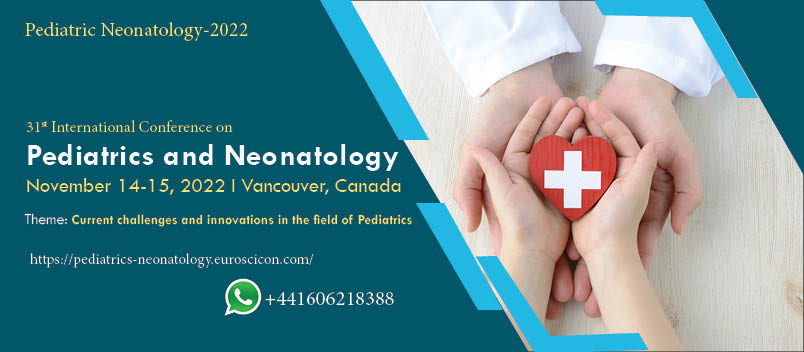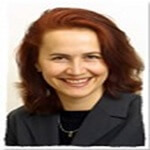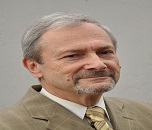PEDINEONATOLOGY 2022
ABOUT CONFERENCE
Pediatrics Conferences theme resembles “Current challenges and innovations in the field of Pediatrics”, and our mission is to achieve advanced mental, physical, social health and wellbeing of our kids around the globe, The Conference will provision the professional needs and interests to work universally, recognize the organizations and individuals that advance the Global theme.
We are currently accepting the proposals for Symposia, workshops and organized contributed sessions, from every Pediatrics and Neonatology prospect. We welcome you towards the where you can grasp and implement the infinite pediatrics topics, and the most pressing issues of Pediatric Science with your research work to save a child.
With your valuable presence at our Pediatrics conferences, many Younger Pediatrician’s and Student Delegates will learn new methods to develop their skills by correlating with your research through the Plenary Talks, Keynote Speeches, Poster Sessions, Panel Discussion, and Workshops presented by you and achieve their future goals.
Targeted Audience:
- Specialists in Pediatric medicine
- Students
- Research Scholars
- Pharmaceutical Companies
- Academic Professionals
- Pediatricians
- Neonatologists
Why attend?
Packed with many symposiums, workshops and numerous plenary sessions with main concentration on thought igniting discussions and peer-directed networking, This conference is the ideal site for to absorb about the cutting-edge trends surrounding the Pediatrics and Neonatology prospects, to gain new skills and insights from successful Pediatric experts were they will be sharing their insights into the part of Pediatrics, Neonatology, and Perinatology, Pediatric Oncology & Hematology, Pediatric Gastroenterology, Clinical Pediatrics, Pediatric Cardiology, Pediatric Orthodontics, Pediatric Neurology, Pediatric Nephrology, Pediatric Diagnostic Techniques, Pediatric Nursing, Child and Adolescent Obesity, Pediatric Nutrition, Pregnancy and Childbirth, Pediatrics Rheumatic Heart Diseases, Pediatric Oral Surgery and rendering this hooked on to real life tactics for your profession and business.
Connect to us and observe the thriving summit by participating in and give your profession and business access to new prospects from all over the Globe.
SESSION & TRACKS
1.Pediatrics:
Pediatrics focuses on the prosperity and well-being of New Borns and Children from Formation to adolescence. It is crucially concerned with all prospects of adolescents’ growth and development and with their exclusive ability to achieve full potential as healthy adults.
- Child Psychology
- Nutritional deficiencies
- Infant mortality
- Genetic abnormalities
- Social implications on Child Health
2. Neonatology & Perinatology:
Neonatology is a subspecialty of pediatrics that consists of the intensive care of newborn infants, especially premature newborn. A Neonatologist is a qualified persona to handle the most multifaceted and high-risk situations. Perinatology is a sub-branch of obstetrics fretful with the maintenance of the fetus and complex, high-risk pregnancies. Perinatology is also known as maternal-fetal medicine.
- Hyperbilirubinemia
- Newborn Nursery
- Special Care Nursery
- Neonatal intensive care unit
- Regional NICU
- Neonatal tetanus
- Neonatal respiratory distress syndrome
- Neonatal conjunctivitis
- Neonatal lupus erythematosus
- Neonatal meningitis
- Alloimmune thrombocytopenia
- Neonatal diabetes mellitus
- Neonatal bowel obstruction
Clinical Pediatrics involves the welfare of ill or diseased children or Newborn with challenges like scientific, behavioral, educational, or ethical, you should be reaching for Clinical Pediatrics.
- Clinical Pediatrician
- Ethical Pediatrics
- Special interest group
- Clinical trials
- Nutrition
- Pharmacoepidemiology
The Pediatric health care involves Scholarly information and study of research regarding primary, acute and specialty health care for Children of newborn age through adulthood. Health care involves issues related to children hospitals, clinical pediatrics centers etc.
- Value-based health care
- Pediatric
- Cardiac testing
- Pediatric emergency medicine
- Health care reform
- Affordable Care Act
5. Pediatric & Neonatal Nutrition:
Nutritional requirements diverge significantly with age, environmental conditions and level of activity, and they are directly related to the rate of growth. Pediatric & Neonatal Nutrition deals with the maintenance of a proper well-balanced diet consisting of the essential nutrients and the adequate caloric intake necessary to promote growth and sustain the physiological requirements at the various stages of a child's development. The motif is to educate and give nutritional guidance for good eating habits.
- Metabolism
- Stress
- Feeding protocol
- Quality Improvement
- Pediatric parenteral nutrition admixture stability
6. Pediatric & Neonatal Nursing:
The discipline of Pediatrics and Neonatal Nursing compacts with the carefulness of young children and the discovery of safer and more operative methods of confirming treatment for them. A newly born baby is an exceedingly problematic patient to treat, and the weak immune system means that precise therapeutic methods are to be implied by medical specialists. The professionals who plan analytic and treatment procedures are always emphasizing the boundaries of what can be attained through Technology.
- Simulation
- Nursing education
- Unfolding case
- Maternity
- Pediatrics
7. Pediatric Emergency Medicine:
The Pediatric Emergency Care band shelters an extensive spectrum of facilities from recognition of acute illness and injury, to acute and sub-acute management, to rehabilitation and return to the medical home, and finally prevention and education. The federal Emergency Medical Services for Children (EMSC) program was created to facilitate better coordination and integration of pediatric-specific needs across this continuum.
- Pediatric emergency medicine
- Patient management
- Pediatric emergency department
- Emergency medicine
- Patient safety
- Ultrasonography
- Electronic health records
- Simulation-based training
- Clinical competence
Pediatric oncology is concerned with study and treatment of cancers in children and young adults. A Pediatric oncologist’s studies and train in both pediatrics and Oncology. The Cancers that occur in Children or newborn are rather different than that which occurs in adults. Hence, pediatric oncologists specialize in treating, children, infants, young adults and teenagers affected from cancer. Juvenile cancers can grow as the result of DNA variations in cells that arise early in life, even before birth. Whereas some adult cancers are linked to environmental or lifestyle factors Cancers, that occur in children or Infants are very rarely related to any type of environmental or lifestyle factor.
- Anthroposophical medicine
- Immunization
- Pediatric oncology
- Healthcare interpreters
- Pediatric oncology care
- Molecularly-targeted agents
- Biologics
Pediatric neurology or child neurology relates to a focused prospect of medicine that deals with the analysis and management of neurological conditions in infants, children newborns, and adolescents. The discipline of child neurology encompasses diseases and disorders of the spinal cord, brain, peripheral nervous system, autonomic nervous system, muscles and blood vessels that affect individuals in these age groups.
- Prenatal anemia
- Neurological morbidities
- Pediatric Otolaryngology
- Supraglottoplasty
- Pediatric Neurologist
- Somatic mutation
10. Pediatric & Neonatal Surgery:
A general surgeon can perform surgery on adults and children, but pediatric or neonatal surgeons have the innovative education and skills essential to perform surgery on infants and very young children. Pediatric surgery is a subspecialty of surgery involving the surgery of fetuses, infants, children, adolescents, and young adults.
- Extracorporeal Membrane Oxygenation
- Pediatrics
- Anticoagulation
- Surgical subspecialization
- General surgery
- Telemedicine
- Telehealth
11. Pediatric Critical Care Medicine:
Pediatric Critical Care Medicine involves treatment of Children who are critically ill in cases like Severe asthma, Deep diabetic ketoacidosis, An overwhelming infection, such as severe pneumonia, Serious injuries from accidents require careful monitoring in a pediatric intensive care unit (PICU). Where, Pediatric critical care specialists organize the care of these children which is provided to them by a team of doctors, nurses, and other health care specialists.
- Pediatric emergency medicine
- Pediatric readiness
- Research methodology
- Anesthesia
- Pediatric critical care
- Pediatrics Benchmarking
12. Pediatric & Neonatal Infection:
Pediatric Infection involves treatment of children who are suffering from infectious diseases and also immunologic diseases caused by microorganisms like fungi, bacteria, viruses & parasites etc. The Neonatal Infection involves the treatment of infants or New Borns who are in very delicate condition. As children are not like adults the Pediatric infectious diseases specialists know how to examine and treat children in a way that makes them relaxed and cooperative.
- Pediatric intensive care unit
- Neonatal intensive care unit
- Epidemiology
- Immunologic marker
- Pediatric infection
- Neonatal
- Transfusion
13. Pediatric & Neonatal Cardiology:
Pediatric & Neonatal Cardiology refers to cardiologic problems that affect newborns, infants where certain are structural modifications they are born with whereas the other include the electrical outline that controls the heartbeat. The study involves extensive research & training in diagnosing of diseases like Congenital heart disease, Arrhythmias, systemic hypertension, pulmonary hypertension.
- Tetralogy of Fallout
- Ebstein's anomaly
- Infant respiratory distress syndrome
- Pulmonary atresia
- Persistent truncus arteries
- Double outlet right ventricle
- Transposition of great arteries
Pediatrics Breastfeeding is a branch of Medicine which involves the study of the nutritional requirement and necessity of Mother’ s Milk to a newborn Child. Breastfeeding is the nourishing of infants babies and young children with milk from a woman's breast. Breastfeeding has numeral benefits to both mother and baby, which infant formula lacks. In order, to meet their developing nutritious necessities, infants must receive nutritionally sufficient and safe balancing foods while breastfeeding continues for up to two years of age or beyond.
- Enteral feeding
- Enteral nutrition
- Tube feeding
- Pediatric
- Breast milk
- Frenotomy
15. Pediatric Allergy & Immunology:
Pediatrics Allergy & Immunology deals with the disorders of immune system and allergies caused due to improper immune system functioning Pet dander, pollen, dust, mold spores, insect stings, food, and medications are examples of allergies causing factors. The Pediatric allergy and immunology does extensive research on such things and Renders the outcome, from which these diseases can be treated.
- Vaccines
- Pediatric infections
- Primary immune deficiencies
- Acquired immune disorders
- Pediatric allergies
- Severe allergic reactions (anaphylaxis)
- Allergy based dermatitis
16. Pediatric Osteology:
The prospect of anatomy that compacts with the structure and functioning of bones in newborn, infants or children is termed as Pediatric Osteology; it involves scientific study, diagnosis and treatment of diverse bones and their relative disorders in children or Infants.
- Endoscopic
- Pediatric
- Endoscopic
- Rib Growth
- Skull base surgery
- Scoliosis
17. Pediatric Radiology:
Pediatric Radiology a branch of Diagnostic Radiology which involves analysis and diagnosis of illnesses, injuries, and diseases of infants, children, and adolescents, using appropriate imaging and diagnostic techniques’ like x-ray, computed tomography (CT), ultrasound MRI (magnetic resonance imaging) Scanning, and nuclear medicine. Pediatric Radiologist is expert who selects the precise technique required for a particular therapeutic condition
- Pediatric Interventional Radiology
- Equipment Selection
- Radiation
- Pediatrics
- Pediatric anesthesia
- Interventional radiology
- Non–operating room anesthesia (NORA)
18. Pediatric Nephrology:
The Pediatrics Nephrology is a sub-prospect of Nephrology which concerns itself with, Study of regular or normal kidney Function & Kidney diseases, conservation of kidney health of Infants and Children from medication, diet to dialysis and kidney transplantation. A Pediatric nephrologist is an expert who the special skills and experience in this field.
- Nephrology
- Kidney disease
- Child
- Healthcare utilization
- Hemodialysis
- Clinical nephrology
- Glomerular filtration rate
19. Pediatric HIV:
Pediatric HIV can be defined as Upright transmission of HIV from mother to adolescent. It is categorized as the main route by which infancy HIV infection is attained; the risk of perinatal acquirement is 25-40% deprived of intervention.
- Maternal Exposure
- HIV testing
- Contraception
- Pregnancy prevention
- Rapid HIV testing
20. Childhood Obesity:
Childhood Obesity can be defined as a condition were excess stubborn fat distresses a child’s health and welfare, the methods to execute the body mass directly are complex the obesity depends on Body Mass Index. Today Childhood Obesity is a major concern. The best strategy to improve obesity is to change the lifestyle and Exercising habits of entire families.
- Adolescents
- Body mass index
- Mortality
- Obesity
- Overweight
- Psychosocial consequences
- Weight patterns
21. Pediatrics Dentistry:
Pediatric dentists are dedicated to the oral health of children from infancy through the teen years. They have the experience and qualifications to care for a child’s teeth, gums, and mouth throughout the various stages of childhood.
Children begin to get their baby teeth during the first 6 months of life. By age 6 or 7 years, they start to lose their first set of teeth, which eventually are replaced by secondary, permanent teeth.
Without proper dental care, children face possible oral decay and disease that can cause a lifetime of pain and complications. Early childhood dental caries—an infectious disease—is 5 times more common in children than asthma and 7 times more common than hay fever. About 1 of 5 (20%) children aged 5 to 11 years have at least one untreated decayed tooth.
Market Analysis
MARKET ANALYSIS
Global Associations and Societies associated with Pediatrics:
- American Academy of Pediatrics
- American Society of Pediatric Otolaryngology
- American Pediatric Surgical Associations
- Society for Pediatric Dermatology
- Child Neurology Society
- European Pediatric Associations
- The North American Society for Pediatric and Adolescent Gynecology
- American Academy Society
- Pediatric Infectious Diseases Society
- Society for Pediatric Radiology
- Society for Pediatric Anesthesia
- Pediatric Trauma Society
- International Pediatric Associations
- Canadian Pediatric Associations
- American Society for Pediatric Oncology & Hematology
- Society for Developmental and Behavioral Pediatrics
- Indian Associations of Pediatric surgeons
- Dutch Associations of Pediatrics
Members Associated with Child Care Research
Pediatric research includes a number of specialties like pediatric cardiology, pediatric allergy, pediatric dermatology, pediatric oncology, pediatric surgery and many more. Every pediatric specialty conducts research related to their respective topic to improve child health care. In Poland there are approximately around 970 pediatricians. There are a number of general pediatricians across the globe. As per the records it is being acknowledged that globally 7.62% are registered pediatricians with specific specialty.
The life expectancy rate has often been in the favor of deaths, especially during the World War. The growth rate also stayed negative until around 2007, but recently the stats have changed. The growth rate has now become 1.19%, which is the estimate calculated in 2012. The birth rate in 2012 was estimated to be 9.96 per 1000 people. The death rate was calculated as 9.24 deaths per 1000 deaths, which is still very close to the birth rate. The fertility rate has been decreasing since 2008, which at that point was 1.39 children born per woman and has now reached 1.31 children born per woman.
The median age of the total population is reported to be 38.5 years. Out of this, the median age for the male population was estimated to be 36.8 years, and for the female population it was reported to be 40.3 years.
The sex ratio at the time of birth between men and women is 1.06 males / female. For the age group under 15 years, it is 1.06 males / female. For the next age group, which is 15-64 years, it is 0.99 male / female. For the last age group, which is 65 years and over, the sex ratio is calculated to be about 0.62 male / female. When combined, this data gives an overall ratio of 0.94 male per female.
The infant mortality rate is estimated to be 6.42 deaths / 1000 live births for the total, with 7.12 deaths for the males and 5.67 deaths for the females per 1000 live births. The life expectancy at the time of birth is 76.25 years. For the male population it is 72.31 years, and for the females it is 80.43 years.
All the more that the deaths under 19 years of age are mostly avoidable, analysis of trends in deaths due to possibly modifiable factors enables taking preventive measures at the national and local level and contributes to reducing future mortality.
Although the number of deaths due to external causes among European children has decreased compared with those of the 1990s, the leading causes are transport accidents, drowning and other external causes. According to the World Health Organization (WHO), every year in the world, as a result of injury and violence about 950,000 children and adolescents below the age of 18 years die, of which nearly 90 % constitute unintentional injuries (WHO and UNICEF. In 2012, in the age group 5–14, injury mortality rate (MR).





























